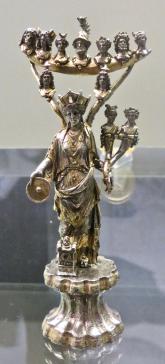Using texts and images, this project explores the ways in which the planets were imagined and visually represented in the Graeco-Roman world in a diachronic and transcultural perspective, from the Hellenistic to the Late Antique period, and across the plurality of societies and cultures that inhabited the wider Mediterranean region over this long period of time.
The working hypothesis deriving from my earlier research on the seven-day planetary week in the Roman Empire is that the deification of the planets along with their key role in astral divination and natal astrology, as well as in calendrical and time-keeping systems, played a prominent part in the ways in which the planets were conceived and depicted in Graeco-Roman antiquity.
My previous research has shown that the seven planets were most frequently represented anthropomorphically, in the shape of their associated deities with their distinctive attributes. This manner of portraying the planets apparently emerged in the early Roman imperial period, at a time when astrological notions, along with the planetary week, acquired increasing popularity in the Graeco-Roman Mediterranean, especially in its western sector.
This project expands the scope of my research on visualizations of the planets in the Graeco-Roman world beyond the specific nexus with the planetary week. I shall carry out a systematic and comparative investigation of the various ways in which the planets were imagined and visually represented in different parts of Europe, North Africa, and the Near East from ca. 300 BCE–600 CE.

